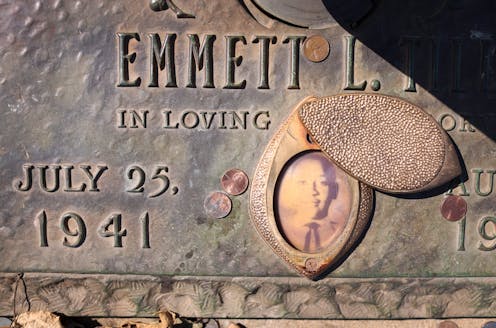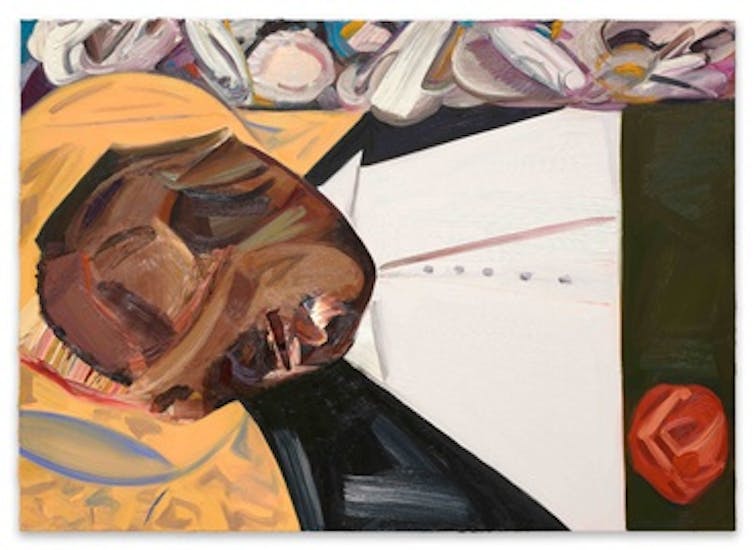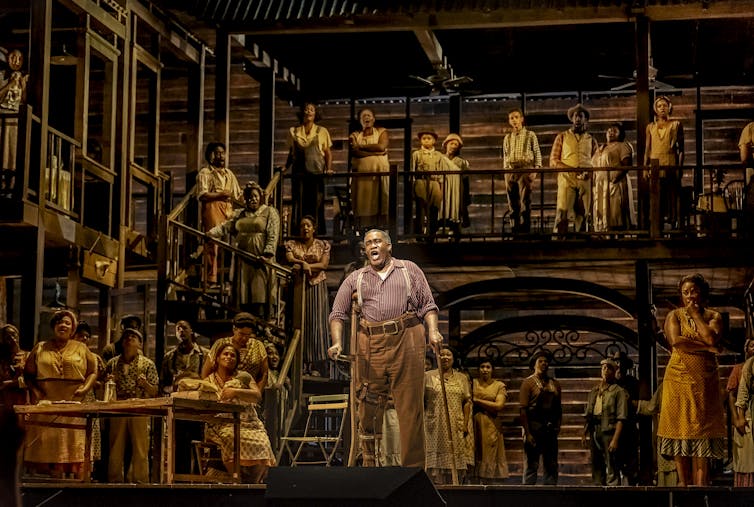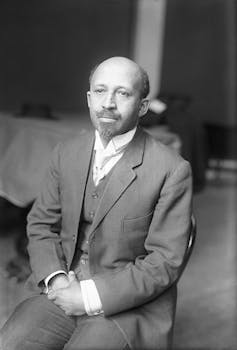
“Are Black audiences, actors, and producers simply conditioned to having their stories told by white counterparts?” screenwriter and director Darian Lane, who is Black, wondered in a 2021 op-ed for Ebony.
On TV and in film, white authorship of Black stories has long been a point of contention, whether it was David Simon writing about a Black neighborhood in Baltimore for his series “The Wire” or Tate Taylor writing and directing “The Help.”
It was only a matter of time before this issue would beset the world of opera. Since “Emmett Till, A New American Opera” premiered at John Jay College on March 23, 2022, a Change.org petition has circulated with 12,000-plus signatories calling for the production to never again see the light of day.
The reason?
A white woman named Clare Coss wrote the libretto, or text, for the opera, which she based on an award-winning play she had written called “Emmett, Down in My Heart” in 2015.
Coss concocted a fictional white female protagonist named Roann Taylor, who fails to call the police when she overhears the lynching of the 14-year-old Till. Eventually, she realizes that her silence has perpetuated injustice and she confronts the killers.
Critics claim the opera elevates the guilt of white audiences while capitalizing on Black trauma. The Washington Post notes that the production joins a slew of white-authored responses to the Emmett Till murder that didn’t sit well with the Black community, ranging from Bob Dylan’s “Death of Emmett Till” to Dana Schutz’s painting “Open Casket.”

On the one hand, I sympathize with the frustrating legacy of white artists telling Black stories. On the other hand, my 25 years of experience teaching African-American theater have made me acutely sensitive to the complications of authorship – especially when it comes to stage productions.
Whom is the opera for?
When artists develop new stories about Black experiences it matters who creates the story. How might their own background connect to the narrative? What sort of audience do they have in mind?
Social activist and cultural thinker W.E.B Du Bois published an essay in a 1926 issue of Crisis magazine that set out to define what constitutes African American drama. He argued that they were plays that ought to be “about” Black communities, “by” Black authors, written “for” Black audiences and performed “near” Black neighborhoods.
Under this definition, Coss’ opera wouldn’t be considered African American drama. While it was a production about the Black community, it was composed, in part, to help white audiences empathize with Black pain.
And even though Coss has said the opera is intended for everyone, she’s also noted that the inclusion of a white character who recognizes her slow response to racial violence was important for predominantly white operagoing audiences to see.
This is the rub. Many Black artists are weary of products told from white perspectives because there’s a tendency for the characters and conflicts to fall into familiar tropes. Lost are the ambiguities and inconsistencies of our unique cultural legacies.
Productions like George Gershwin’s “Porgy and Bess,” where the Black experience is reflected in old tropes, still draw huge crowds. The opera – which tells the story of Porgy, a disabled, downtrodden Black man who lives among drug dealers and addicts – perpetuates stereotypes of Black people as addicts who are incapable of self-sufficiency.

In this moment of raised social consciousness, it’s important to tell stories about Black injustices. But stories of joy, community, healing and wellness are just as important.
So it’s refreshing to see newer musicals like Michael R. Jackson’s “A Strange Loop,” which is now playing on Broadway. Jackson, who is Black, wrote a musical that plumbs the inner psyche of a character named Usher who struggles with anxieties about his queer identity and lifestyle. A chorus of colorful characters depicts his thoughts as he untangles his fraught family relationships and rebuilds his self-esteem.
The complications of ‘by’
The “by” of Du Bois’ argument is particularly complex in the case of both the Till opera and “Porgy and Bess.” Both productions feature white authors writing about Black experiences that are then depicted by Black performers.

Is the author the writer, producer, director or lead performer? Many productions about the Black experience – Steven Spielberg’s 1985 adaptation of Alice Walker’s “The Color Purple” is just one example that comes to mind – were originally authored by Blacks yet produced by whites to accommodate white sensibilities. At the time of its release, the film also elicited controversy for depicting Black female experiences through the eyes of a white male producer and director.
The current controversy about the Emmett Till opera ultimately glosses over a complex collaborative processes. As with most performance projects, many artists participated in realizing the final product. Afro-Cuban composer Tania León conducted the score. The Harlem Chamber Players and Opera Noire International co-produced the work.
Most importantly, Mary Watkins, the composer, is Black. The composer is usually considered the core creative artist in an operatic work, and Watkins artfully uses emotional arias and music that mimics moans to draw listeners into the anguish of the mother’s loss.
“Even though there are many artists of color involved in this project, the critics are assuming that we have had no impact on the final shape of the piece and that the playwright has somehow forced all of us to tell her story,” Watkins wrote in an email interview. “It is an insult to me as a Black woman and to the cast members who are African-American.”
Performing race
One of my students once pointed out that enslaved Africans arrived in the Americas naked and were then forced to don clothing provided by the enslavers.
We have been wearing garments and identities designed to conform to white sensibilities ever since. African American theater historians have long grappled with how to assess Black contributions in a country where white critics, by and large, evaluate our cultural productions.
Books like “African American Performance and Theater History” describe how double-conscious performance styles enabled Black artists to resist stereotypical representations on stage. Hattie McDaniel, for example, played the maid in “Gone With the Wind” with tenacious spunk, using sassy comedy to humanize her servile “Mammy” role.
Newer anthologies, like my edited collection “Black Performance Theory,” complicate notions of Black authorship and artistry. The book describes how Blackness circulates through cultural productions as vocal, physical and visual imagery which may or may not be aligned with Black bodies on stage. For example, in “Emmett Till, A New American Opera,” Watkins’ use of resonant open tones in the first few bars of Mamie Till’s lament, “My Son, My Child,” evokes the choral singing of the African American gospel tradition.
To me, the backlash against the white librettist is ultimately a waste of time. Not only is there room for works done in collaboration with Black artists, but cross-cultural, interethnic collaborations also add to the richness and versatility of performed storytelling.
Du Bois wrote about Black performance as it existed within the confines of a segregated society. Theatrical performances by, for, near and about can certainly unite Black communities around collective storytelling.
But I also cherish the vibrancy of storytelling that includes a diversity of perspectives. I hope to see more operas, plays and musicals that encourage conversations about Black identities – without efforts to cancel those who have contributed to the effort.
Anita Gonzalez does not work for, consult, own shares in or receive funding from any company or organization that would benefit from this article, and has disclosed no relevant affiliations beyond their academic appointment.
This article was originally published on The Conversation. Read the original article.







